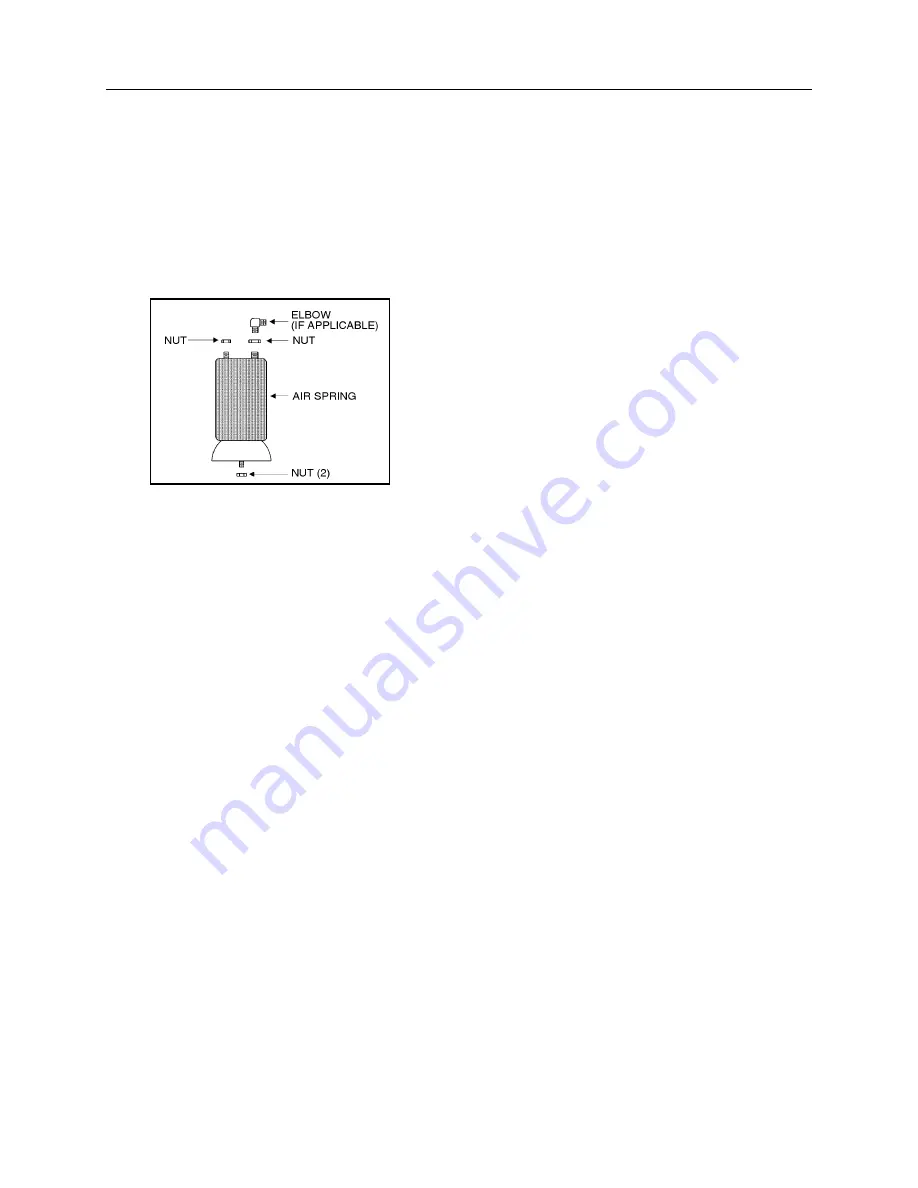
Section 16: SUSPENSION
16-4
2. AIR SPRING
The "rolling lobe" type air springs are made from a
special compound rubber molded to the proper
contour and dimensions. The entire vertical load
of the vehicle is supported by these springs. Each
of the three axles is provided with air springs that
are attached to the subframe and to the axles.
FIGURE 3: AIR SPRING
16007
2.1 Inspection
1. Check operation of bellows.
2. Visually inspect bellows for evidence of cracks,
punctures, deterioration, or chafing. Replace
the bellows if any damage is evident.
3. With the primary air system at normal operat-
ing pressure (95 - 125 psi (655 - 860 kPa)),
coat all suspension air line connections and
bellows mounting areas with a water and soap
solution. Bubbles will indicate an air leak, and
none is permissible. Repair or replace defec-
tive parts.
Note:
If air spring is removed from vehicle,
bellows can be lightly inflated and submerged
in water to detect any leakage. If any leakage
is detected, replace bellows.
Warning:
To prevent personal injury, do not
apply more than 10 psi (69 kPa) air pressure
with the air spring unmounted.
2.2 Removal
Note:
Suspension air springs (front, drive,
and tag axles) can be removed without re-
moving the entire axle assembly.
1. Safely support vehicle at the recommended
body jacking points.
To gain access to a given air spring, the corre-
sponding wheel can be removed as follows:
a) Jack vehicle until the tire clears the ground,
and place safety supports underneath
body.
Caution:
Only the recommended jacking
points must be used as outlined in Section 18,
"Body".
b) Support the axle with a suitable hydraulic
floor jack at the recommended jacking
point.
c) Remove wheel.
2. Exhaust compressed air from accessory air
tank by opening drain cock under reservoir.
3. Disconnect the height control valve link and
pull down the overtravel lever to ensure all air
is exhausted from air springs.
Note:
While performing this step, do not
change the height control valve overtravel
lever adjustment.
4. Disconnect air line from air spring, remove
elbow (if applicable), and cover both the line
end and fitting to prevent the entry of foreign
matter (Fig. 3).
5. Remove the two air springs upper nuts, and
then the two lower nuts (Fig. 3). Remove air
spring.
2.3 Installation
1. Compress air spring as necessary, then align-
ing studs with their holes, position air spring
between both the lower and upper supports.
Thread the lower nuts and the small upper nut
a few turns.
2. Tighten and torque the lower stud nuts, and
then the upper one to 20 - 25 lbf·ft (27 -
34 N·m) (Fig. 3).
3. Thread the remaining upper nut (large nut) and
tighten to 20 - 25 lbf·ft (27 - 34 N·m) (Fig. 3).
4. Install elbow (if applicable), then connect air
line (Fig. 3).
5. Connect the height control valve link.





































